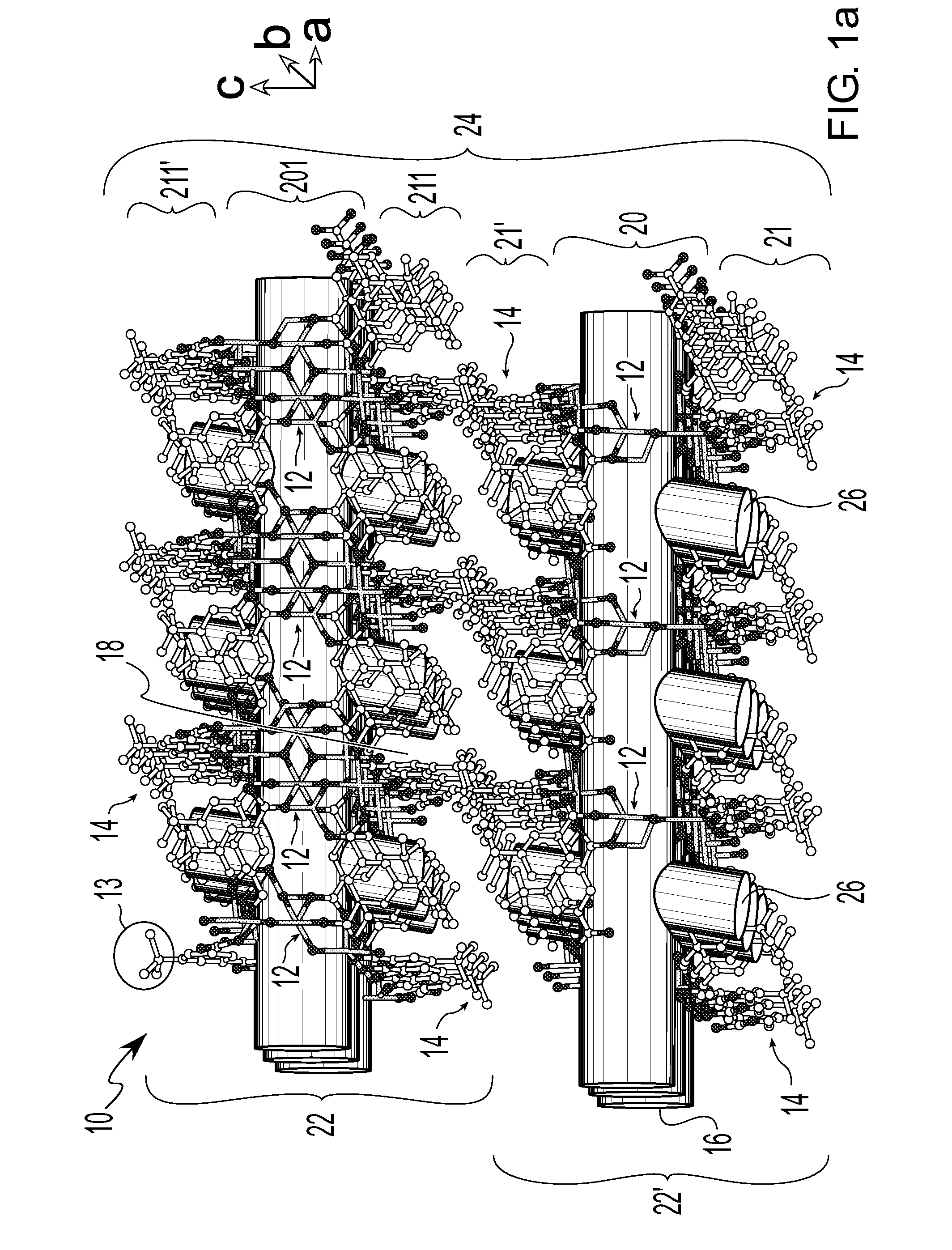Mesh-adjustable molecular sieve
a technology of molecular sieves and meshes, which is applied in the direction of group 3/13 element organic compounds, other chemical processes, separation processes, etc., can solve the problems of difficult hydrogen and nitrogen, inefficient operation, and inability to adjust the mesh size of the molecular sieve,
- Summary
- Abstract
- Description
- Claims
- Application Information
AI Technical Summary
Benefits of technology
Problems solved by technology
Method used
Image
Examples
examples
[0088]Commercially available reagents were used as received without further purification. Elemental analyses (C, H, and N) were obtained by Canadian Microanalytical Service, Ltd. Thermogravimetric analyses were performed under N2 on a PerkinElmer TGA 7.
[0089]For Ni8(μ3-OH)4(BBDC)6, single crystal X-ray determination (Table 1 and FIG. 11) was performed on a Bruker Smart Apex® diffractometer (Bruker AXS, Inc., Madison, Wis.) using Mo-Kα radiation (λ=0.71073 Å). The data were collected on a crystal with dimensions of 0.23 mm×0.08 mm at −60 deg. C. A total of 1321 frames of data were collected using c-scans with an increment of 0.3 deg. and a counting time of 60 sec / frame. The raw data were processed using SAINT+® (Bruker) to yield the HKL file. Adsorption corrections were applied using SADABS® (Bruker). Direct methods were used to solve the structure, which was refined by full-matrix least-squares on F2 with anisotropic displacement parameters. The hydrogen atoms on carbon and oxygen a...
PUM
| Property | Measurement | Unit |
|---|---|---|
| Temperature | aaaaa | aaaaa |
| Pore size | aaaaa | aaaaa |
| Amphiphilic | aaaaa | aaaaa |
Abstract
Description
Claims
Application Information
 Login to View More
Login to View More - R&D
- Intellectual Property
- Life Sciences
- Materials
- Tech Scout
- Unparalleled Data Quality
- Higher Quality Content
- 60% Fewer Hallucinations
Browse by: Latest US Patents, China's latest patents, Technical Efficacy Thesaurus, Application Domain, Technology Topic, Popular Technical Reports.
© 2025 PatSnap. All rights reserved.Legal|Privacy policy|Modern Slavery Act Transparency Statement|Sitemap|About US| Contact US: help@patsnap.com



